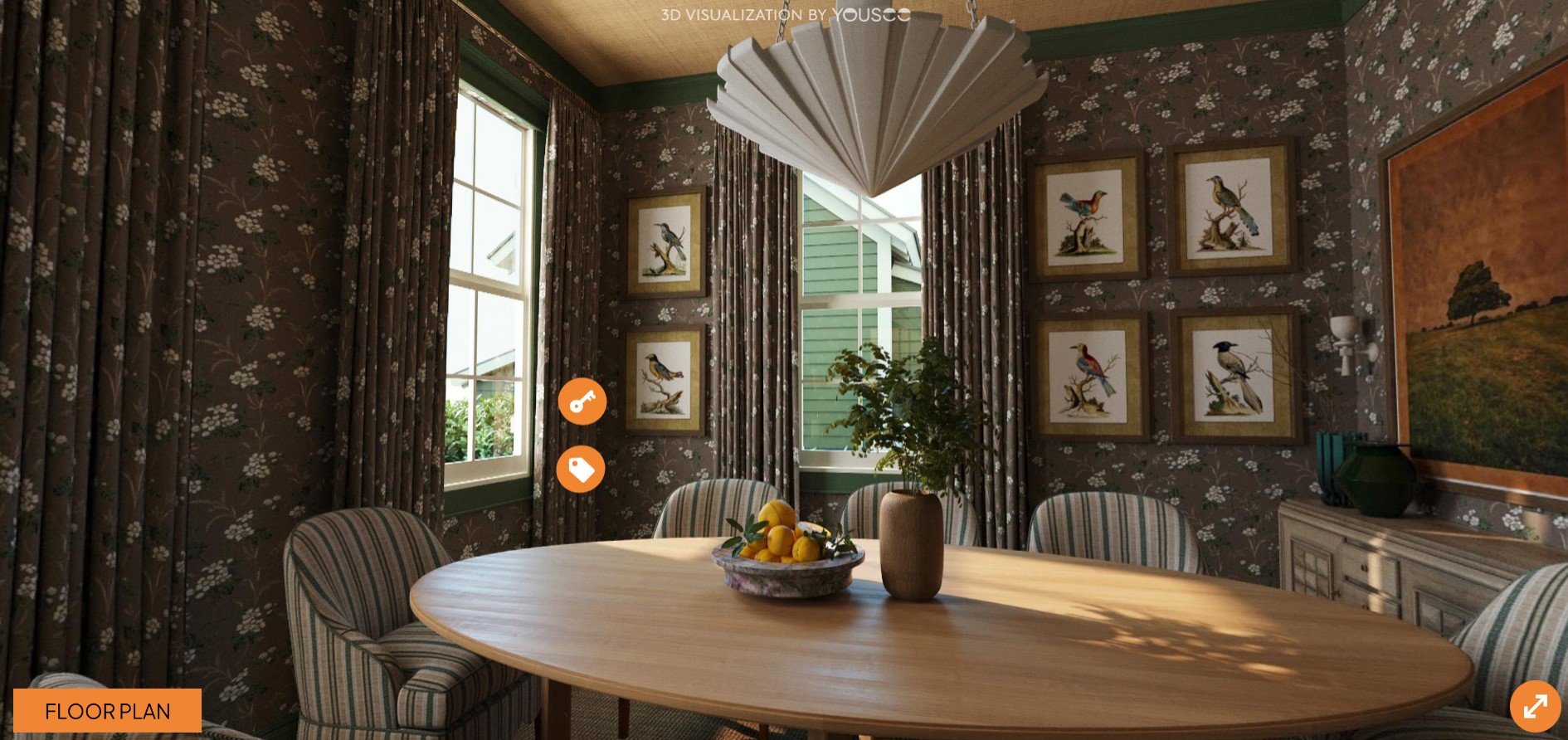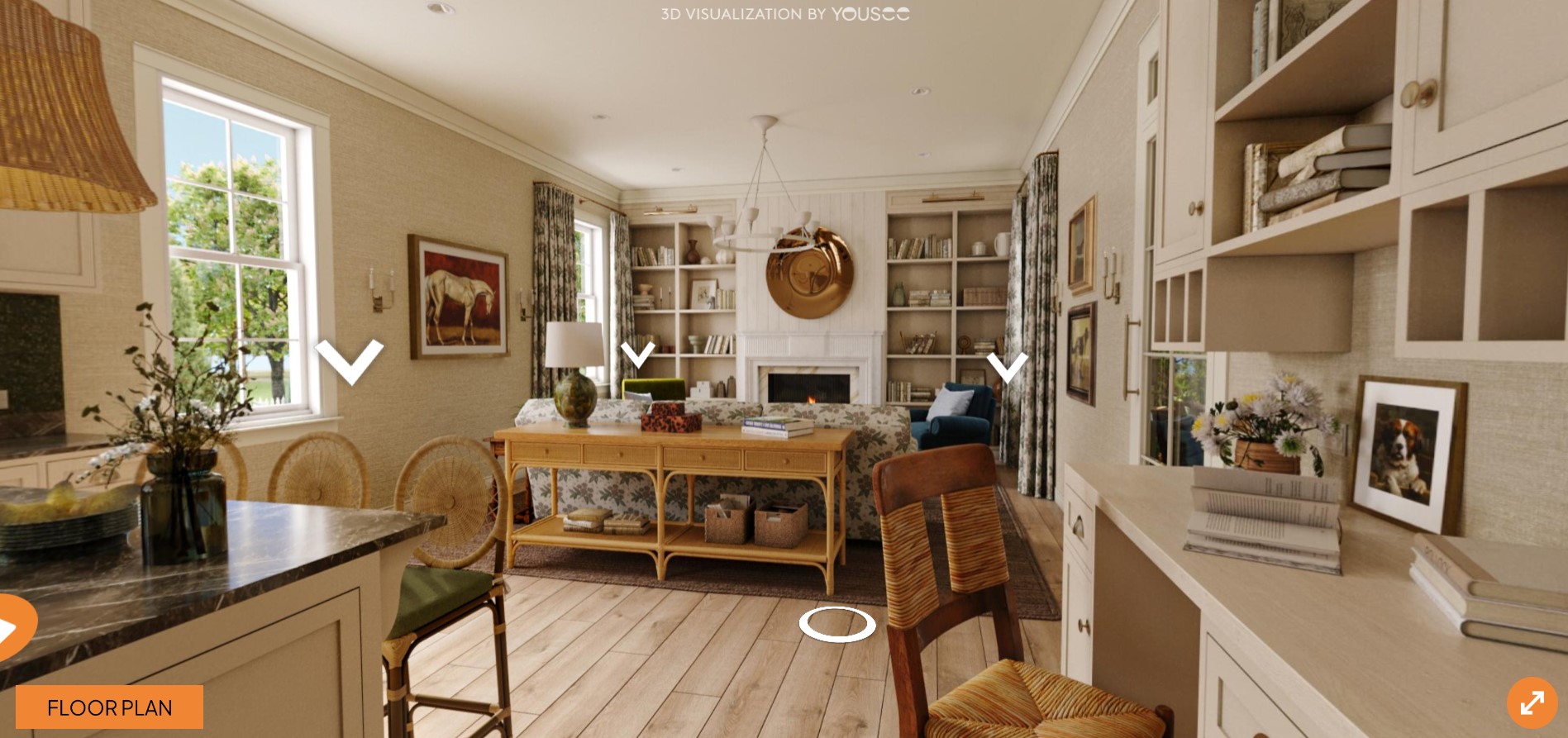Virtual Furniture Showrooms: Revolutionizing eCommerce in the Metaverse
In the ever-evolving landscape of eCommerce, a groundbreaking innovation is reshaping how consumers shop for furniture: the 3D virtual showroom. This cutting-edge technology is a passing trend and a transformative force revolutionizing the entire furniture retail industry. By seamlessly blending the digital and physical realms, virtual showrooms offer customers unprecedented interaction with products, bridging the gap between online shopping and the in-store experience.
The Dawn of a New Era in Furniture Retail
The virtual showroom concept isn't entirely new, but recent technological advancements have catapulted it into the spotlight. With the rise of the metaverse and the increasing sophistication of augmented reality (AR) and virtual reality (VR) technologies, furniture retailers can now create immersive, lifelike environments that replicate the experience of browsing a physical store – all from the comfort of one's home.
In 2023, the global AR and VR market in retail was valued at $11.2 billion, with projections suggesting it could reach a staggering $55.3 billion by 2028. This exponential growth is primarily driven by the furniture and home decor sector, where the ability to visualize products in a realistic setting is paramount to the purchasing decision.
The Anatomy of a Virtual Furniture Showroom
At its core, a virtual furniture showroom is a digitally rendered space that allows customers to explore and interact with furniture pieces in a 3D environment. Unlike traditional online catalogs, which rely on static images and basic product descriptions, these virtual spaces offer a dynamic, immersive experience that closely mimics walking through a physical store.

The technology behind these showrooms is a complex blend of 3D modeling, real-time rendering, and interactive design. High-quality 3D models of furniture pieces are created using advanced software, capturing every detail from the grain of the wood to the texture of the fabric. These models are then placed within a virtual environment that can be customized to reflect various room layouts and styles.
What sets modern virtual showrooms apart is their level of interactivity. Customers can move around the space freely, zoom in on specific details, change the color or material of furniture pieces, and even place items in different configurations to see how they work together. Some advanced platforms even incorporate haptic feedback technology, allowing users to "feel" the fabrics' texture or the surfaces' smoothness through specialized gloves or controllers.
The Technology Powering Virtual Showrooms
The creation and operation of virtual furniture showrooms rely on a sophisticated tech stack that includes:
- 3D Modeling Software: Programs like Autodesk Maya, Blender, or SketchUp are used to create highly detailed, photorealistic 3D models of furniture pieces.
- Game Engines: Platforms such as Unity or Unreal Engine, traditionally used in video game development, are now employed to create interactive, real-time 3D environments.
- AR/VR Hardware: Devices like Oculus Quest, HTC Vive, or smartphone-based AR systems deliver immersive experiences to users.
- Cloud Computing: Many virtual showrooms leverage cloud-based services to handle the massive computational requirements of rendering complex 3D environments in real-time.
- AI and Machine Learning: These technologies are increasingly used to personalize the shopping experience, offering product recommendations based on user behavior and preferences.
Redefining Customer Engagement
The impact of virtual showrooms on customer engagement must be considered. Traditional e-commerce platforms often need help with high return rates in the furniture sector, mainly due to the disconnect between how a product appears online and how it looks in a customer's home. Virtual showrooms address this issue head-on by providing a more accurate representation of products.
A study conducted by Shopify in 2022 found that products with 3D/AR content saw a 94% higher conversion rate compared to those without. This statistic underscores virtual showrooms' power in attracting customers and convincing them to make a purchase.
Moreover, virtual showrooms are changing the way customers interact with brands. Instead of passive browsing, shoppers become active participants in the design process. They can experiment with different styles, colors, and layouts, creating a personalized shopping experience that fosters a stronger emotional connection with the products and the brand.
The Economic Impact on Furniture Retailers
The adoption of virtual showrooms has a profound economic impact on furniture retailers. While the initial investment in technology can be substantial, the long-term benefits are proving to be significant:
- Reduced Physical Inventory: Virtual showrooms allow retailers to showcase a broader range of products without needing physical stock, reducing warehousing costs.
- Decreased Return Rates: Virtual showrooms help reduce return rates, which can be as high as 30% in the furniture industry, by providing a more accurate representation of products.
- Expanded Market Reach: Virtual showrooms eliminate geographical constraints, allowing retailers to reach customers globally without needing physical stores in every location.
- Increased Average Order Value: The ability to visualize products in context often leads to customers purchasing complementary items, increasing the average order value.
- Data-Driven Insights: Virtual showrooms generate valuable customer preferences and behavior data, allowing retailers to make more informed decisions about product development and marketing strategies.
Sustainability and Virtual Showrooms
An often overlooked aspect of virtual showrooms is their potential environmental impact. Virtual showrooms can significantly lower the carbon footprint associated with furniture retail by reducing the need for physical samples and decreasing return rates.
An Environmental Protection Agency (EPA) report estimated that returns in the U.S. alone create approximately 5 billion pounds of landfill waste annually. Virtual showrooms could play a crucial role in reducing this waste by helping customers make more informed purchasing decisions.
Furthermore, reducing physical inventory and the need for large showroom spaces can lead to decreased energy consumption and lower emissions associated with transportation and storage.
The Role of AI in Enhancing Virtual Showrooms
Artificial Intelligence is playing an increasingly important role in enhancing the capabilities of virtual furniture showrooms. AI algorithms analyze customer behavior within the virtual environment, providing personalized recommendations and tailoring the shopping experience to individual preferences.
One innovative application of AI is virtual interior design assistance. AI-powered virtual assistants can suggest furniture arrangements and color schemes by analyzing a customer's style preferences, budget, and room dimensions, effectively turning every shopper into an amateur interior designer.
Moreover, natural language processing (NLP) is being integrated into virtual showrooms, allowing customers to interact with the environment using voice commands. This not only enhances accessibility but also creates a more intuitive and immersive shopping experience.
Overcoming Technical Challenges
While virtual showrooms offer immense potential, they are not without their challenges. One of the primary hurdles is ensuring that the virtual representation of products is accurate in terms of color, texture, and scale. Discrepancies between virtual and physical products can lead to customer dissatisfaction and increased returns.
To address this, many retailers invest in advanced color calibration technologies and work closely with manufacturers to ensure that digital models precisely match their physical counterparts. Some are even exploring using spectrophotometers to capture exact color data that can be replicated in the virtual environment.
Another challenge is the varying levels of technological literacy among consumers. While younger generations may quickly adapt to virtual showrooms, older demographics might find the technology intimidating. To bridge this gap, retailers focus on creating intuitive user interfaces and providing comprehensive customer support to guide users through the virtual experience.
The Integration of Social Commerce
As virtual showrooms evolve, we see an exciting convergence with social commerce. Platforms like Pinterest and Instagram are already experimenting with AR features that allow users to visualize furniture in their homes. The next logical step is the integration of full virtual showrooms into social media platforms.
This integration could revolutionize the way furniture is marketed and sold online. Imagine scrolling through your social media feed and being able to step into a virtual showroom directly from a post, explore a collection, and make a purchase without ever leaving the platform.
Some forward-thinking retailers are already exploring this concept. In 2023, a prominent Scandinavian furniture brand launched a pilot program that allowed users to access a virtual showroom through their Facebook and Instagram accounts. Compared to traditional social media advertising, the initiative saw a 27% increase in engagement and a 15% boost in conversion rates.
The Global Reach of Virtual Showrooms
One of the most significant advantages of virtual showrooms is their ability to transcend geographical boundaries. This is particularly important in global eCommerce, where retailers constantly seek ways to expand their reach without the enormous costs associated with physical expansion.
Virtual showrooms are enabling furniture retailers to enter new markets with minimal risk. For instance, a company based in Milan can now offer customers in Sydney or São Paulo the experience of walking through their showroom without needing a physical presence in those cities.

This global accessibility is beneficial not only for large, established brands but also for smaller, niche furniture designers. It's opening up opportunities for these designers to reach a global audience. Artisanal furniture makers from remote regions can now showcase their unique creations to customers worldwide, preserving traditional craftsmanship while tapping into international markets.
The Psychological Impact of Virtual Shopping
The psychology behind virtual shopping experiences is a fascinating area of study that's gaining increased attention as virtual showrooms become more prevalent. Research has shown that the immersive nature of these environments can trigger emotional responses similar to those experienced in physical stores.
A study published in the Journal of Consumer Psychology in 2023 found that customers who used virtual showrooms reported higher emotional engagement with products than those who browsed traditional online catalogs. This increased engagement translated to higher purchase intent and greater brand loyalty.
Moreover, visualizing products in a context that closely resembles one's own living space can reduce the cognitive dissonance often associated with online furniture shopping. This, in turn, leads to more confident purchasing decisions and increased customer satisfaction.
Conclusion: A New Chapter in Furniture Retail
As we stand on the brink of a new era in eCommerce, virtual furniture showrooms are leading the charge in redefining the online shopping experience. By bridging the gap between the digital and physical worlds, they're not just changing how we shop for furniture – they're reshaping our expectations of what online retail can be.
The technology behind these virtual showrooms continues to evolve rapidly, with innovations in AI, VR, and AR pushing the boundaries of what's possible. As these technologies become more sophisticated and accessible, we can expect virtual showrooms to become an integral part of the furniture retail landscape.
For retailers, the message is clear: embracing this technology is no longer a luxury but a necessity to remain competitive in an increasingly digital marketplace. For consumers, virtual showrooms promise a future where the line between online and offline shopping blurs, offering unprecedented levels of convenience, personalization, and engagement.
As we look to the future, one thing is sure: the virtual furniture showroom is not just a passing trend but a transformative force set to redefine the essence of furniture retail in the digital age. The stage is set for a revolution in eCommerce, and virtual showrooms are leading the way into this exciting new frontier.
Contact us at YouSee Studio for captivating 3D renderings and immersive virtual experiences.
Karen Spacey is a content writer and the author of this article.

